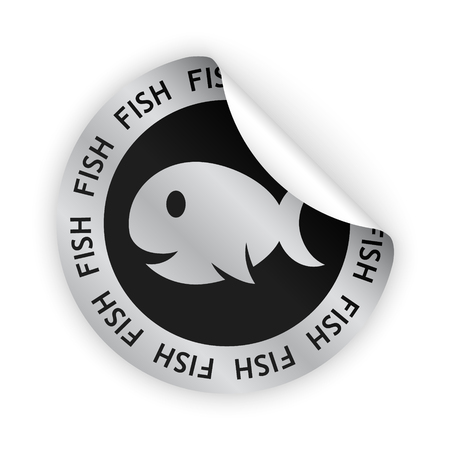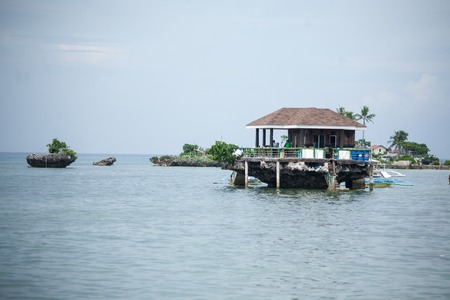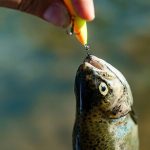1. The Importance of Sustainable Saltwater Fishing
Sustainable saltwater fishing is more than just a trend—its a crucial practice for anyone who loves casting a line in America’s oceans, bays, and estuaries. By focusing on sustainability, we help ensure that our favorite fishing spots stay healthy and productive for generations to come. But why does it matter so much?
How Sustainability Impacts Saltwater Fishing
Every time an angler heads out to the water, their choices can affect marine ecosystems and fish populations. Overfishing, pollution, and habitat destruction can threaten the balance of life below the waves. When we choose sustainable fishing practices, we support the delicate web of marine life and protect the future of recreational angling.
Main Reasons Sustainability Matters
| Reason | Impact |
|---|---|
| Protects Marine Ecosystems | Keeps habitats like coral reefs and seagrass beds healthy for all ocean creatures. |
| Maintains Fish Populations | Prevents overfishing so popular species like redfish, snook, and snapper remain plentiful. |
| Secures Future Angling | Makes sure future generations can enjoy saltwater fishing adventures. |
| Supports Local Communities | Sustainable fisheries help local economies thrive without exhausting natural resources. |
The Role of Anglers in Conservation
Anglers are at the front lines of conservation. By following catch limits, practicing catch-and-release with care, and respecting protected areas, we all play a part in preserving America’s saltwater treasures. Every responsible choice adds up to healthier waters and better fishing for everyone.
Top Sustainable Saltwater Fishing Destinations in the U.S.
When it comes to saltwater fishing, America is home to some incredible destinations that not only offer fantastic catches but also set the bar high for conservation. These spots are famous for their healthy fisheries, strict regulations, and community-led efforts to protect marine life for generations to come. Here’s a closer look at some of the best sustainable saltwater fishing destinations across the United States.
Florida Keys, Florida
The Florida Keys are legendary among anglers. Not only do these islands offer year-round opportunities for tarpon, bonefish, and permit, but the region is also a leader in marine conservation. The Florida Keys National Marine Sanctuary protects more than 2,900 square nautical miles of waters, making sure fish populations stay healthy and vibrant. Local charter operators often practice catch-and-release and encourage responsible angling to preserve the ecosystem.
Why It’s Sustainable:
- Protected marine areas
- Catch-and-release policies for certain species
- Strong local support for conservation
Cape Cod, Massachusetts
Cape Cod offers classic New England saltwater fishing for striped bass, bluefish, and tuna. The area is well-known for its strict size and bag limits, which help maintain fish stocks. Conservation groups work closely with local fishermen to monitor populations and enforce sustainable practices. Plus, Cape Cod’s clean waters and preserved habitats make it a prime spot for eco-conscious anglers.
Why It’s Sustainable:
- Carefully managed fisheries
- Active habitat restoration programs
- Community education on sustainable fishing
Pacific Northwest: Washington & Oregon Coasts
The Pacific Northwest offers world-class saltwater fishing for salmon, halibut, and rockfish. This region stands out for its science-based fisheries management and collaborative efforts between state agencies and tribal nations. Hatchery programs are designed to support wild populations, and there are numerous marine protected areas along the coast.
Why It’s Sustainable:
- Emphasis on wild fish protection
- Sustainable harvest quotas
- Community-driven conservation initiatives
Sustainable Saltwater Fishing Destinations at a Glance
| Destination | Main Species | Sustainability Features |
|---|---|---|
| Florida Keys, FL | Tarpon, Bonefish, Permit | Marine sanctuary, catch-and-release focus |
| Cape Cod, MA | Striped Bass, Bluefish, Tuna | Size/bag limits, habitat restoration |
| Pacific NW (WA & OR) | Salmon, Halibut, Rockfish | Wild stock protection, harvest quotas |
If you’re searching for an unforgettable fishing adventure that leaves a positive impact on the environment, these top U.S. destinations combine great catches with a commitment to sustainability.

3. Local Regulations and Responsible Practices
Sustainable saltwater fishing isn’t just about catching big fish—its also about protecting our oceans for future generations. Whether you’re casting a line off the Florida Keys or heading out to the Pacific Northwest, following local rules and making eco-friendly choices is key. Here’s how you can do your part:
Understanding State and Local Fishing Regulations
Each state in the U.S. has its own set of saltwater fishing rules designed to protect fish populations and habitats. These regulations often include size limits, bag limits, and closed seasons for certain species. Before you head out, check the official website of the state’s fish and wildlife agency or download their mobile app. Carrying a valid fishing license is a must in most places.
| Regulation Type | Why It Matters | Example |
|---|---|---|
| Size Limits | Protects juvenile fish so they can reproduce | Red Snapper in Florida: 16-inch minimum size |
| Bag Limits | Prevents overfishing by limiting daily catches | Striped Bass in New York: 1 per angler per day |
| Closed Seasons | Allows fish populations to recover during breeding times | Cobia closed season in Virginia (June–August) |
Practicing Catch and Release
Catch and release is one of the best ways to enjoy great fishing while keeping fish populations healthy. To do it right:
- Use barbless hooks: They make releasing fish easier and reduce injury.
- Handle fish with wet hands: This protects their slime coat, which helps prevent disease.
- Avoid keeping the fish out of water too long: A good rule is to hold your breath while the fish is out—if you need air, so does the fish!
- Revive tired fish: Gently hold them in the water until they swim away on their own.
Choosing Eco-Friendly Gear
The gear you use matters for conservation efforts. Here are some responsible choices:
| Eco-Friendly Gear | Benefits | Where to Find It |
|---|---|---|
| Biodegradable fishing line | Breaks down faster, reducing pollution risks if lost at sea | Tackle shops, online retailers like TackleDirect or Bass Pro Shops |
| Lead-free sinkers & weights | Avoids toxic lead contamination in waterways and wildlife | Cabela’s, local sporting goods stores |
| Circular hooks (non-offset) | Lowers chance of gut-hooking fish; improves survival after release | Mainstream fishing supply brands such as Eagle Claw or Owner Hooks |
| Reusable bait containers & tackle boxes | Cuts down on single-use plastics and trash on boats and shores | Most outdoor retailers across the U.S. |
Quick Tips for Responsible Angling Behavior:
- Pack out what you pack in: Always take your trash home—even tiny pieces like fishing line or bait wrappers.
- Avoid sensitive habitats: Stay clear of seagrass beds, coral reefs, and bird nesting areas when anchoring or wading.
- Treat every catch with respect: Remember, even “just one” careless act can have big effects on local ecosystems.
- Report illegal activities: If you see poaching or dumping, notify local authorities to help protect your favorite waters.
4. Iconic Catches and Seasonal Species
When fishing in sustainable saltwater destinations across the United States, targeting the right species at the right time can make your trip unforgettable. Many areas have become famous for specific fish that not only offer thrilling catches but also thrive thanks to strong conservation efforts. Here are some of the most popular species to target, where you can find them, and the best times to plan your adventure.
Popular Saltwater Species in Sustainable Areas
| Species | Best Locations | Peak Seasons | Why Theyre Special |
|---|---|---|---|
| Redfish (Red Drum) | Gulf Coast, Southeast Atlantic (Florida, Texas, Louisiana) | Fall (September-November), Spring (March-May) | Hard fighters, often caught on shallow flats; thriving due to slot limits and catch-and-release rules. |
| Striped Bass | East Coast (Chesapeake Bay, Cape Cod, New Jersey Shore) | Spring runs (April-June), Fall runs (September-November) | Migratory fish that return every year; strict regulations help keep populations healthy. |
| Halibut | Pacific Northwest, Alaska | Late Spring to Early Fall (May-September) | Massive size and delicious fillets; managed with quotas and seasons for sustainability. |
| Snook | Florida Gulf Coast, Everglades | Spring (March-May), Summer (June-August) | Catch-and-release during spawning months; prized for their fight and flavor. |
| Porgy (Scup) | Northeast Atlantic (Rhode Island, Massachusetts) | Summer (June-September) | Easily accessible from shore or boat; managed by strict bag limits. |
Making the Most of Your Trip
Sustainable fishing means knowing when and where to go. Planning your trip around peak seasons ensures youll have the best chance at landing these iconic catches while respecting local regulations. For example:
- Redfish: Try sight-casting on grassy flats in Louisiana during autumn for a shot at trophy fish.
- Striped Bass: Join the spring migration along the Atlantic coast—surfcasting is especially popular in New England.
- Halibut: Book a summer charter out of Homer, Alaska, for a chance at giants over 100 pounds.
Tackle Tips for Memorable Catches
The right gear helps protect both fish and their habitats. Use circle hooks for catch-and-release, practice safe handling, and always check local regulations before heading out. This way, you’ll be part of keeping America’s top saltwater fisheries thriving for future generations.
5. Supporting Conservation Through Community and Organizations
One of the best ways anglers can help keep saltwater fishing destinations healthy and sustainable is by getting involved in conservation efforts. Whether you’re a local or just visiting, every action counts when it comes to protecting our oceans and marine life.
How Anglers Can Make a Difference
There are many simple and effective ways to support conservation while enjoying your favorite fishing spots. Here are some ideas that work well across the U.S.:
| Action | How It Helps | Examples |
|---|---|---|
| Volunteering | Supports local projects and builds community awareness. | Habitat restoration, tagging fish for research, youth education events. |
| Participating in Cleanups | Keeps waterways clean and safe for both wildlife and anglers. | Beach cleanups, marina trash removal, “Adopt-a-Shoreline” programs. |
| Supporting Organizations | Provides funding and voices for bigger conservation initiatives. | Joining groups like Coastal Conservation Association (CCA), American Sportfishing Association, Trout Unlimited (for coastal rivers). |
| Practicing Responsible Fishing | Reduces impact on fish populations and habitats. | Catching only what you need, using circle hooks, following local regulations. |
The Power of Working Together
When anglers band together with community members and organizations, their impact grows even more. Many U.S.-based groups organize fun events like fishing tournaments that double as fundraisers or awareness campaigns for conservation. By showing up, spreading the word, or even making small donations, you help protect your favorite saltwater fishing spots for the future.
Get Involved Locally
If you want to get started, look for local chapters of national organizations like the Coastal Conservation Association or check with nearby tackle shops—they often know about upcoming events or volunteer opportunities. Every bit of effort helps keep America’s saltwater fishing destinations thriving for generations of anglers to come!


